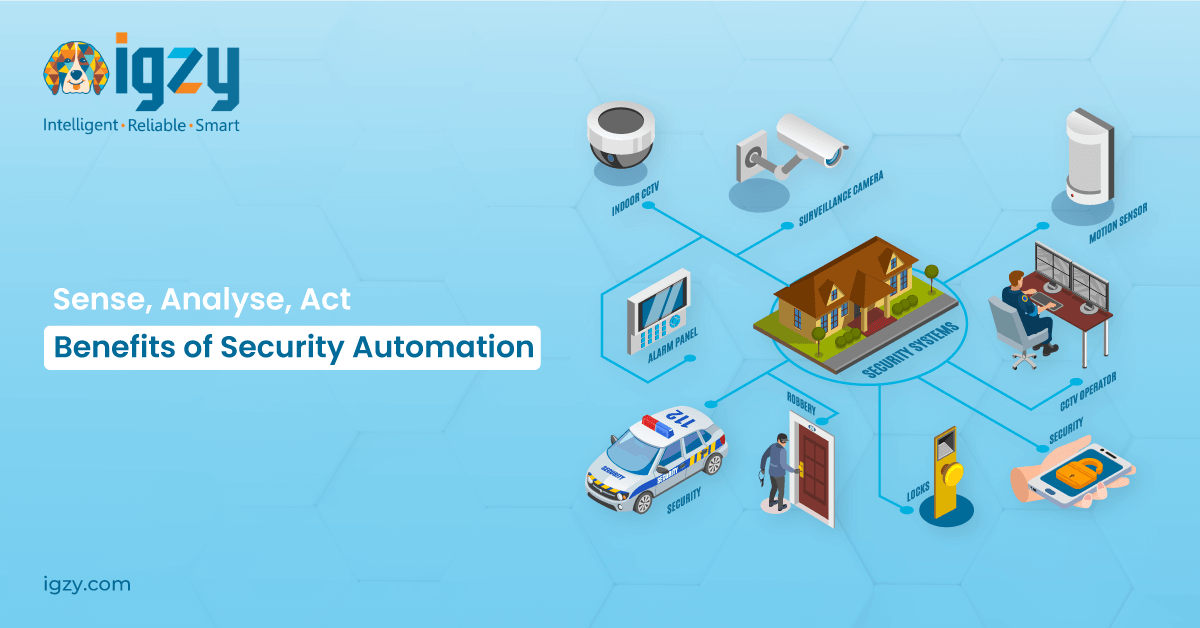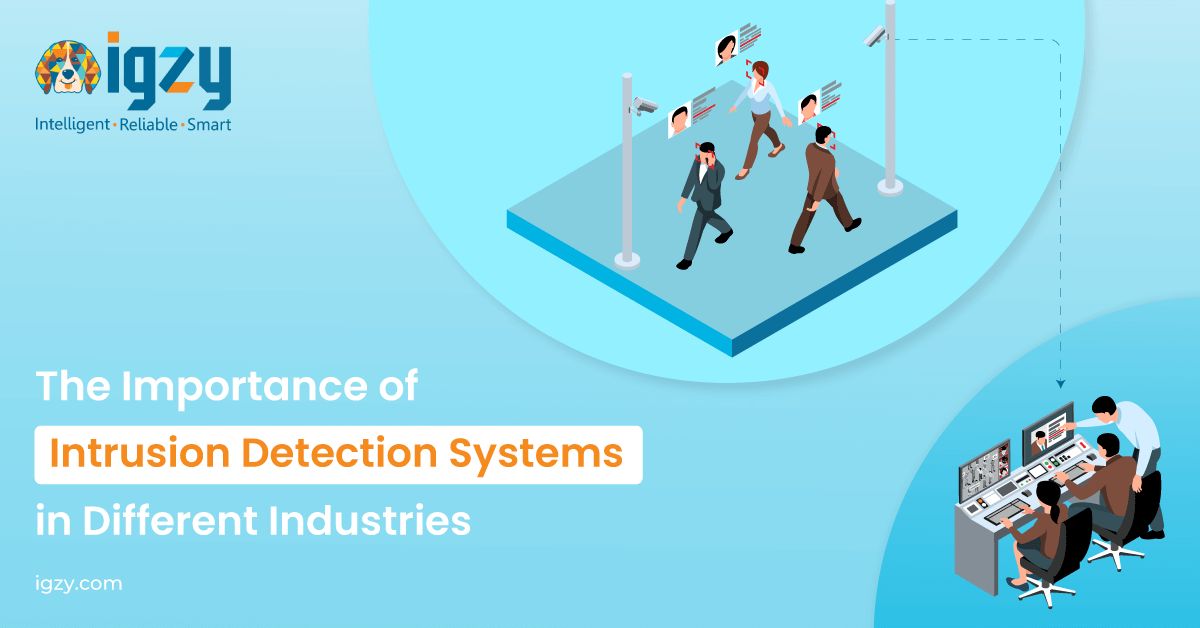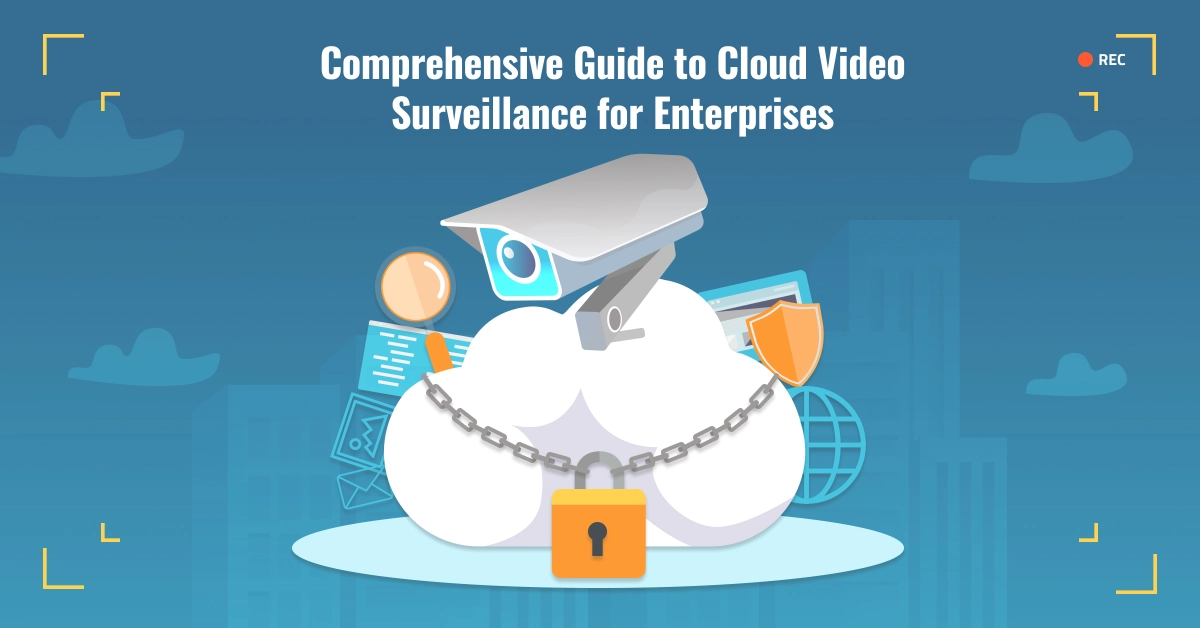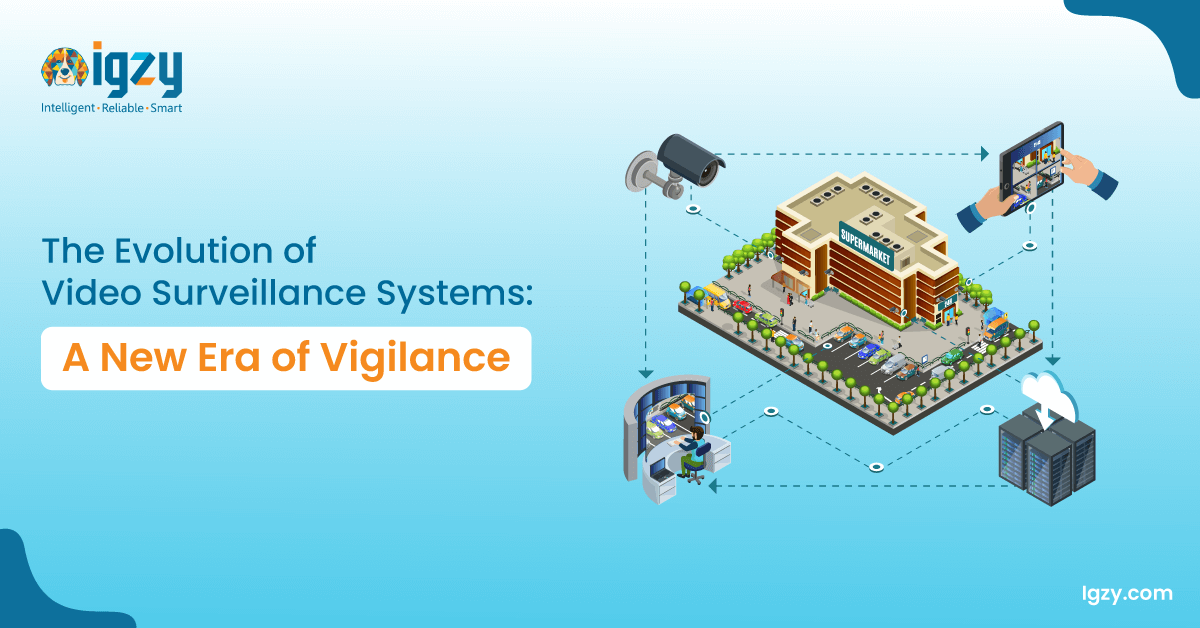Things to Be Aware Of While Choosing Surveillance Cameras

Table of Contents
A camera or video surveillance system is an integrated platform of using any number of cameras for observing and securing premises. The key functions of camera surveillance systems are recording, processing, storing, managing, and viewing the images and videos captured by it. Gone are the days of manual monitoring and supervision. Manguarding is proved to be expensive. Organizations and individuals are moving digital and camera surveillance system is a necessity these days. These systems are highly effective and widely used by people around.
4 basic components of surveillance camera system
Video Camera
Video cameras are the foremost component in the surveillance system. This hardware works at the front-end. These come in different varieties. There are endless possibilities when choosing a surveillance camera and lenses for the system. It all comes down to the need, usage and environment. Based on technology, there can be
- Analog or IP cameras
- Wired or Wireless cameras
- Day or Night Cameras
- Indoor or Outdoor Cameras
- Hidden or Visible Cameras
Monitor
Monitor or displays are necessary for viewing the recorded footage. These displays vary according to the number of cameras connected and the size of the screens required. Monitors come in various varieties ranging from LCD (Liquid Crystal Display) to LED (Light Emitting Diode) to OLED (Organic Light Emitting Diode) with OLED being most high-tech and clear. Large monitors allow viewing footage from multiple cameras at once. With the advancement in technology, smart surveillance system makes remote viewing possible. It turns the smartphone or tablet into a monitor with ease of viewing the footage from the comfort of your place.
Cables and Wires
A network of wiring has to be laid down in and around the premises depending on locations where cameras need to be installed. Apart from basic power cables analog cameras also require coaxial cable which connects it to the recording device whereas IP cameras require a network cable.
Recording Device
These handle the task of recording and storing the footage from the back-end. Three types of recorders are generally available with DVR (Digital Video Recorder) being the oldest followed by NVR (Network Video Recorder) and the latest being CMVR (Cloud Managed Video Recorder). DVR being outdated only supports analog cameras, whereas NVR and CMVR support both IP and analog cameras. In the case of CMVR, Bridge appliance is needed to connect both wired and wireless cameras to the cloud data centre via the internet.
Types of surveillance cameras
With the advancement in technology, more and more types of cameras are developed solving a specific problem and making its own space. Here are some varieties of surveillance cameras available and what makes them unique.
Box/C-Mount Camera
These function like any other camera, but have a special provision of lens changing which makes them capable of viewing beyond 40 ft. The bulky size and ability to cover large distances make them ideal for outdoor locations or for the places where aesthetics are not a concern.
PTZ Camera
Thanks to the mechanical motor in the Pan Tilt and Zoom cameras, they are capable of moving left to right (pan), up and down (tilt), and zooming the lens closer or further. Thus maximizing the viewing area. These also have a feature of tracking movements and can move in a specific pattern set by the user.
Day/Night Camera
These are called 24-hour surveillance cameras for a reason. The Day/Night cameras are independent of the light in the environment. These are capable of working in both low light and normal lighted conditions. The infrared illuminators around the lens and extra sensitive chips allow capturing clear videos in darkness also. This makes them ideal for indoor as well as outdoor imaging.
Wireless Camera
No wires, no mess. Wireless cameras offer ease of installing as it doesn’t require any sort of network cable. Inbuilt Wi-Fi offers seamless connectivity. This eliminates the cost of network cables and provides clear HD footage.
Thermal Camera
Thermal camera uses heat sensors incorporated in it to produce surveillance footage. Even dust, smoke, fog, or harsh weather doesn’t affect its working as it uses heat dissipated by bodies or objects to differentiate and produce a video. These are capable of working in darkness also.
Dome Camera
These attractive looking dome-shaped cameras are best suited for indoor use because of the aesthetic appearance and ability to be discreetly placed. The camera lens is packed around a dome-shaped housing, protecting it from any damage. The outer dome makes it nearly impossible to tell which way the lens is facing.
ANPR/LPR Camera
ANPR stands for automatic number plate recognition and LPR stands for license plate cameras. These cameras come with optical character recognition technology, which makes them capable of reading texts and numbers. These are proved to be very helpful when registering vehicles entering and leaving the premises or capturing any information related to numbers or texts. These have a smart feature of storing information too.
Bullet Camera
These cameras are characterized by a long cylindrical body and protective casing around it. This shields them from dust, water, and other natural elements making them a perfect choice for outdoor environments. Ability to view longer distancing and easy mounting make them a preferred choice for organizations.
Features of modern surveillance cameras
HD Resolution
New generation IP cameras come with HD capabilities out-of-the-box. Cameras are either HD meaning 720p or full HD meaning 1080p where ‘p’ refers to pixels. Clear and sharper footage is essential for accessing 100% capabilities of camera surveillance like face recognition or viewing from far away places or reading important information.
Cloud as storage
Data from surveillance cameras is constantly under a great risk when stored in on-site devices. It could be stolen or vandalized. Storing in cloud data centres is a lot safer option compared to traditional DVRs or NVRs. Because of the hassle-free installation and maintenance, they are widely used in today’s camera systems. Moreover, for growing organizations, the cloud is proved to be very flexible as cameras under cloud system new cameras can be easily configured using a bridge.
Power over Ethernet (PoE)
Traditionally IP cameras require 2 cables for working- power cable and network cable. But this new technology makes supplying power and network possible via a single wire. There are two types of PoE available in the market. First, one being a simple PoE wire capable of transferring 15-watt power, and the other one, PoE+ is capable of supplying double the power (30-watt) for more powerful cameras like PTZ or cameras with a fan.
Wide Dynamic Range
Dynamic range refers to the difference in lighting. In a single frame when one area is brightly lit and the other one poorly lit, the footage becomes blurry as the camera is not able to process such light difference. But cameras with WDS provides much smoother footage because of the enhanced sensors, changed programming and colour mapping. This solves the menace of underexposed or overexposed images.
Remote access
In this fast-moving world, one doesn’t have time to sit at a place for hours to monitor and analyze recordings. Therefore, modern-day surveillance system provides access to the data from any place in the world unless the camera surveillance system and phone are connected to the internet. This allows managers to manage multiple tasks at once.
High FPS
FPS or frames per second is nothing but the number of frames or still images the camera can capture in one second. More FPS translates to smoother videos. With lower frame rates the videos break and become choppy. 30 fps is the current industry standard for video recording. High fps becomes very useful when reviewing the footage to identify any crimes or in traffic conditions. Cameras with even low fps are also available, reducing the size of the videos captured; however, it directly results in the quality of the recording.
Video analytics
Video analytics are provided by almost every modern camera surveillance system. Gone are the days when footage captured was only viewed. Nowadays, with smart camera surveillance, the captured footage is monitored and analyzed to derive real-time insights that could help the organization to grow. These insights could be varied for different places. For instance, insights about the inflow of people at certain hours and their movement pattern in retail stores.
Tamper Detection
Surveillance cameras are prone to a lot of damage. Tamper detection in modern surveillance systems can be turned on to provide alerts to the users if anybody tries to physically harm the camera system or block its view in any way or try to cut its power supply. The system records the time and duration and immediately send it to the person concerned.
High-tech Image Sensors
Image sensors are the basis of image quality. Light from the camera lens enters the image sensor. This is where the image is formed depending on the light and the sensor’s capabilities. They are of many two types-
- CCD sensors or charge-coupled device is the obsolete camera sensor that has been prevalent from a very long time. Only the older generation cameras rely on these sensors.
- CMOS sensor or complementary metal-oxide-semiconductor is the new age sensor used by most modern cameras. These are capable of capturing HD resolution footage along with advanced capabilities to further improve image quality like colour mapping, light adjustment, etc.
Video Compression
During the day, various unnecessary files or frames are recorded by the camera surveillance system which happens daily. Video compression solves this problem by eliminating and deleting these redundant files without impacting the final video and ultimately decreasing its size. Thereby reducing the stress on the storage device.
So, if you’re planning to install a video surveillance camera system in your residential or commercial space, you must look at the above-mentioned specification and features in the system. Also, you must depend on a reputed vendor for all your needs.
IGZY has been working in this domain for a long time with reputed clients. With excellent reviews from our existing clients, the team continues to provide the best service with greater efficiencies.





